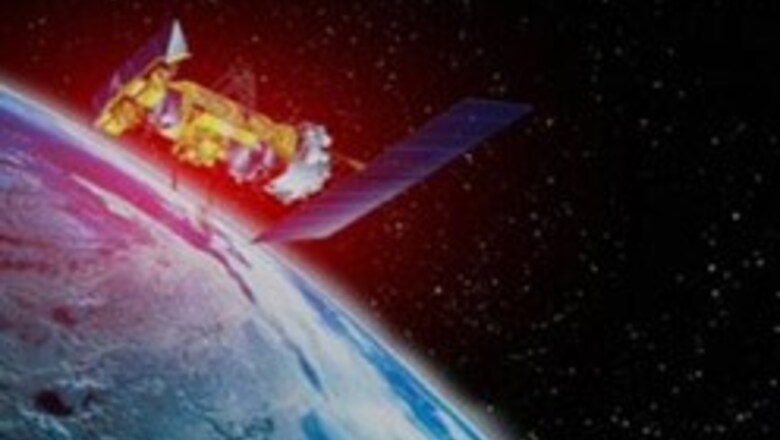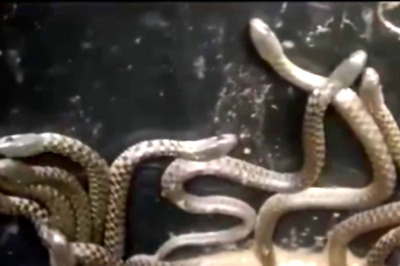
views
The US Navy has succeeded in its effort to shoot down the inoperable spy satellite before it could crash to Earth and potentially release a cloud of toxic gas, the Department of Defense claimed.
But was this exercise necessary? Was it an exercise by the US Defence Department to showcase its missile capabilities to the world? Here is a lowdown:-
THE SATELLITE
"It appeared to be a dot of light in the sky, moving... like a plane going over, but silent and without flashing," Jonathan McDowell of Jonathan's Space Report and Harvard Centre for Astrophysics says.
It could be viewed in the early evenings when it's dark and the satellite was high enough in the sky that its metal was reflecting sunlight. Until the weekend, the satellite — called 'USA 193' — was supposed to pass over some US, Canadian and Western European cities, moving generally from southwest to northeast.
THE RISKS
The satellite, USA 193, was launched in December 14, 2006, but it went unresponsive to commands shortly after its launch. The US Department of Defense announced on February 14 that the satellite was in an uncontrolled decaying orbit.
Defense Department calculations showed if left on its own, the school bus-size orbiter would crash on Earth sometime later this month or early next month. Government computer models show about 56 per cent of the 5,000-pound (2,268-kg) satellite may survive reentry and hit the Earth.
At a February 14 press conference, officials added that President George W. Bush had authorized the shoot-down to prevent the satellite from releasing a toxic gas from its fuel tank.
The US Defense Department had expressed fear that the fuel of the satellite, about 1,000 pounds (453 kg) of hydrazine, could enter Earth could have a disastrous effect on people. Toxicologists says long-term exposure to the hazardous chemical, which related to ammonia, could cancer. Inhale a lot of it could also prove deadly, experts say.
They say the fuel tank of the satellite would probably rupture when it hits the ground, spreading toxic gas over an area roughly the size of two football fields.
Others, however, thought even if the fuel tank is not destroyed, it is quite likely that the tank and its cargo wouldn't burn up in the atmosphere like it happened in case of the Columbia space shuttle.
THE SHOOTDOWN
The military wanted to attempt the shootdown during the day.
But eventually the missile was launched just after 2230 hours (EST) on Wednesday or 0900 hours (IST) on Thursday. The missile launched from a Navy ship successfully struck the dying satellite passing 210 km over the Pacific, a defence official said.
The goal in this first-of-its-kind mission for the Navy was not just to hit the satellite, but to obliterate a tank aboard the spacecraft carrying 450 kg of a toxic fuel called hydrazine. Two defence officials said the missile apparently achieved the main aim of destroying an onboard tank of toxic fuel.
THE TIMING
The first opportunity for the Navy to shoot down the satellite came about 2230 hours (ET) on Wednesday. The plan included firing a missile from the USS Lake Erie in the Pacific Ocean, west of Hawaii, to destroy the satellite.
"A network of land-, air-, sea- and space-based sensors confirms that the US military intercepted a non-functioning National Reconnaissance Office satellite which was in its final orbits before entering the Earth's atmosphere," a Department of Defense statement said.
The shootdown of the dying spy satellite created a show in the heavens — a US rocket launch and flying space debris. Unfortunately, few earthlings were able to see it.
PAGE_BREAK
THE DEBRIS
If the satellite has been pulverized into tiny pieces, it won't leave much to see. Chances are a little better if big chunks remain that 'could stay in orbit for a couple of weeks,' McDowell said.
"Overall, the average person won't be able to see much of anything," he said. Ted Molczan, a hobbyist satellite observer who has tracked 'USA 193' since its launch in December 2006, is slightly more optimistic. Fifteen hours after the intercept, depending on cloud cover, observers near latitude 50 degrees north will be able to scan the satellite's known orbit to determine whether it is still there.
"They could also detect debris in orbit,: he says. But, "there is a lot of cloud at mid-northern latitude during the winter," he says.
SPACE WAR?
Sceptics, however, said it was a ploy of the US Defence Department to experiment with and prove its missile capabilites. The US was actually itching for such an experiment after China successfully attempted a similar drill in January 2007, in which they had
intentionally shot down one of its own aging weather satellites using a modified ballistic missile.
The US Government had then criticised the unannounced move. In this case, the US Navy's real goal was to counter that exercise in China.
And with this mission, the US Defence Department seems to have proved that US rockets designed to intercept nuclear missiles can be retrofitted to hit satellites.



















Comments
0 comment